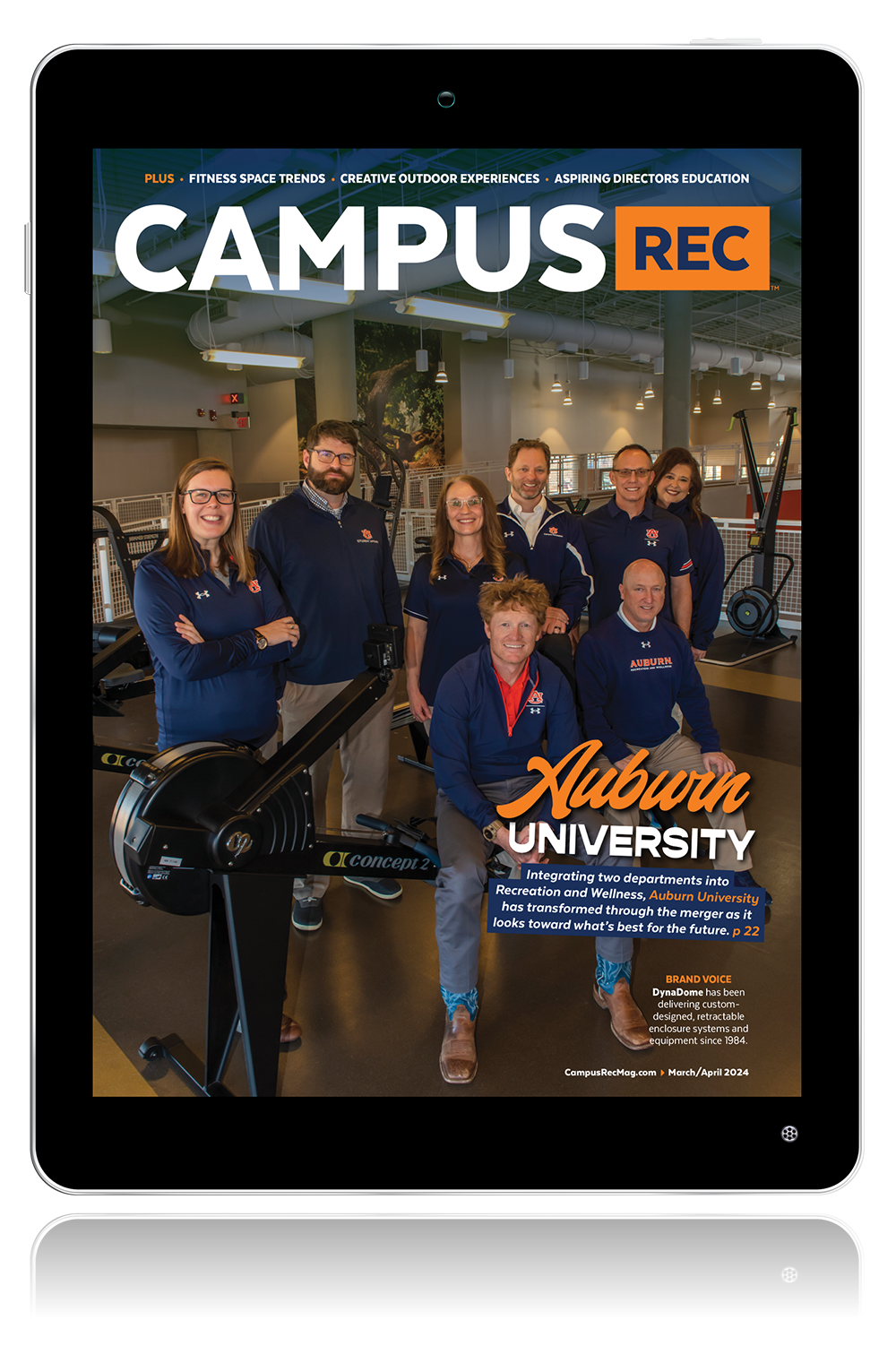There are many components to a successful campus recreation department, from the equipment to the staff to the design of the facility. But what is often overlooked are the safety features and protocols of the facility, particularly those for a fire emergency.
Fire hazards are all over the place and can cause serious damage if not accounted for by the rec center staff. Therefore, it’s important to have the right protocols in place in the event of a fire emergency.
Campus Rec spoke with Kim Clark, the director of campus recreation at the University of Houston, about the importance of fire emergency safety protocols and how to implement those strategies:
CR: What protocols do you have in place for fire emergencies?
KC: We have basic protocols in place including the locations of fire extinguishers throughout the facility and how to use them, as well as an evacuation plan. The evacuation plan breaks down responsibilities by staff position. Each position then has specific responsibilities and a section of the building for which they are responsible for evacuating and clearing during a fire evacuation. Emergency exits and evacuation routes, as well as areas of safe refuge, are identified that can be used for participants who are disabled and may need assistance evacuating. The plan also includes designated locations where participants are to be directed once they have exited the facility as well as a rally point for all staff to meet to ensure that all are safe and accounted. The plan also includes actions to be taken once an all clear has been given by campus police and the fire department before participants may re-enter the facility.
CR: Are there any challenges in implementing safety protocols?
KC: Ensuring that staff “buy in” to the value of safety first, always. It is not a question of “if” but “when” an emergency will occur, and we must be proactive and not only have emergency plans in place, but review them, practice implementing them, and then evaluate and modify them as necessary to ensure all staff are prepared to implement the plan when an emergency occurs. Complacency is not an option.
CR: How do you educate your staff on these procedures?
KC: Education begins as part of the onboarding process for all incoming staff. The Emergency Action Plan is provided to and reviewed with new staff. The department also has a risk management committee which is comprised of the program director from each respective area. The committee contributes to reviewing and modifying the emergency action plan annually, planning and implementing trainings, covering monthly in-service safety topics, setting inspection schedules and documentation procedures, as well as identifying and addressing other risk management issues.
CR: How do you educate students on these procedures?
KC: Education begins as part of the onboarding orientation process for all incoming student staff. All staff are presented with the Emergency Action Plan, quizzed on the information, and then participate in an emergency drill as part of the training process. Education and training then continues throughout the year with a combination of periodic departmental risk management trainings, monthly in-service safety topics and Red Manikin Drills which provide an opportunity for student staff to participate in a simulated emergency in which they must implement the emergency action plan while being evaluated.
CR: Do you have any advice for other campus rec departments?
KC: Safety and risk management is integral to all we do within campus recreation and dictates we are diligent in our efforts. Develop a comprehensive emergency action plan, review and update it on a regular cycle, train and re-enforce safety training with all staff, and provide opportunities to practice implementation of the plan to help staff build competence and confidence when responding in emergency situations.










